PAT GARRETT AND BILLY THE KID (1973)
Pat Garrett is hired as a lawman on behalf of a group of wealthy New Mexico cattle barons to bring down his old friend Billy the Kid.
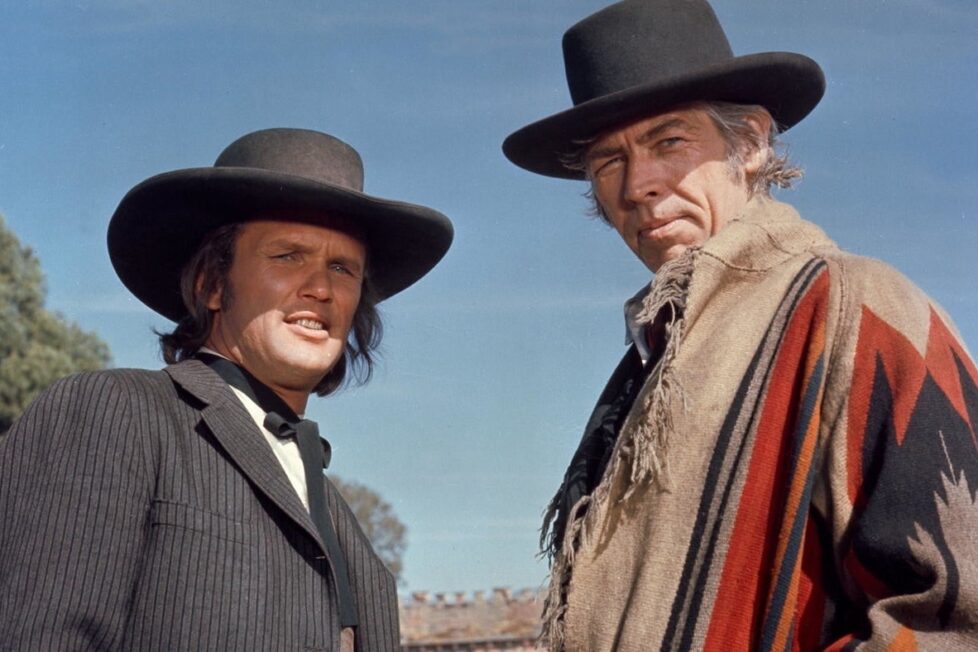
Pat Garrett is hired as a lawman on behalf of a group of wealthy New Mexico cattle barons to bring down his old friend Billy the Kid.


When Pat Garrett and Billy the Kid was released 50 years ago, anticipation had flooded the moviegoing landscape. Though Westerns had entered their twilight after dominating popular culture for over 30 years, they mattered as a mirror in which many Americans saw themselves during the 20th-century… and this one promised to matter more than most.
The story of Billy the Kid and his slayer, Pat Garrett, is a bit of US history that became lore and legend through numerous fiction, including 15 feature films up to that point. But this latest version promised to be the best, even if it placed the legend over historical fact. But, in a unique twist, while keeping the mythic aspects, it would strip away the romantic sheen. It was a revisionist riff, a countercultural (or “hippie”) take, starring a large cast of veteran Western actors of the era, over whom would tower James Coburn as Garrett, folk singer-songwriter Kris Kristofferson (in his second film) as the Kid, and, in his film acting debut, future Nobel Prize-winner Bob Dylan, who also composed and performed the score.
Best of all, behind the camera, was the best film director of the era: Sam Peckinpah. In his best films, such as Ride the High Country (1961), The Wild Bunch (1969), The Ballad of Cable Hogue (1970), Straw Dogs (1971), and Junior Bonner (1972), Peckinpah demonstrated an extraordinary vision and talent that earned him comparisons not only with Western film legend John Ford, but also masters such as Ingmar Bergman, Federico Fellini, and Akira Kurosawa.
I was already on my pogo stick for this film when I received one more reason for joy. Though released in May 1973, Pat Garrett didn’t reach the small Midwestern city where I was living until later that summer, where it showed at a drive-in on the second half of a double bill with—sit down for this—The Wild Bunch (the best of the films that rode the genre into its sunset era). Now I was over the moon: my then-favourite film ever coupled with the latest by my then-favourite director.
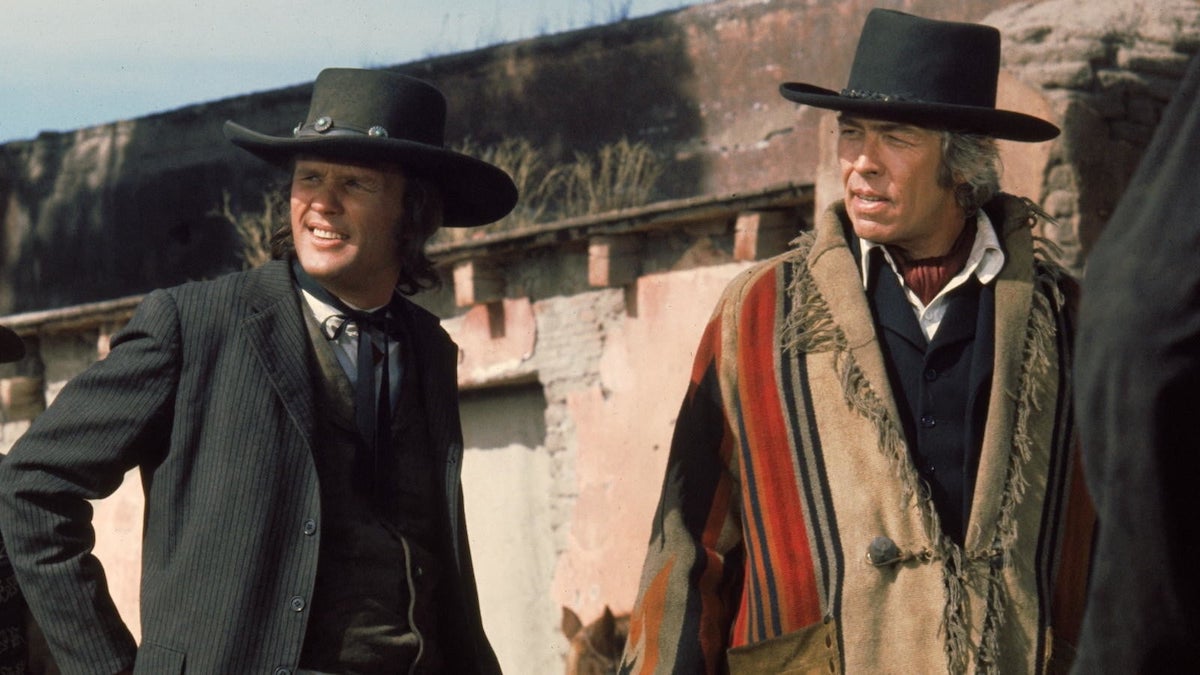
My companions at the time were less excited than I was, so we were late for The Wild Bunch by a couple of minutes. But that faux pas all but passed from memory, because, astonishingly, the print they showed was Peckinpah’s complete, final version, which only a few had seen before producer Phil Feldman controversially whittled it down by 10-minutes for the general release I’d seen twice. Somehow, Peckinpah’s final cut had snuck past the scissors, all the way to a drive-in theatre in Oshkosh, Wisconsin.
On the bootheels of such unexpected treasure, Pat Garrett and Billy the Kid seemed flat, but I didn’t let it bother me much, because it was a drive-in. A second viewing would surely improve the experience. But when I saw it again a couple of years later in a campus theatre, it played even flatter. And it never got better, even after repeated viewings of four re-edited versions released over 30 years. I changed but the film remained the same: slow, static, and boring. Now, I’ll try to explain why…
The four versions of Pat Garrett more or less open at the same time and place, shortly after the end of the notorious feud that made Billy the Kid’s name: The Lincoln County War, a businessmen’s war that lasted from 1878 to 1881 and took 23 lives. The story starts with Garrett (Coburn) riding into Fort Sumner, New Mexico Territory, in search of Billy (Kristofferson). He joins the Kid and his gang in target practice on some hapless chickens and then sits down with Billy in the cantina for a drink and a little talk.
Garrett and the Kid were once friends and fellow outlaws, but those days are over. “It feels like times have changed,” Garrett tells the Kid. “Times, maybe,” the Kid replies in a desultory fashion. “Not me.”
But now Garrett has “sold out” by taking the job of sheriff of Lincoln County. His new bosses, the territorial government, and the businessmen (the “Santa Fe Ring”) urging statehood for New Mexico, want Billy and his outlaw gang out of the territory in five days, or else Garrett will come gunning for him. The future is on its ruthless way: the wide-open spaces are going to be fenced off. It’ll be no country for young outlaws.
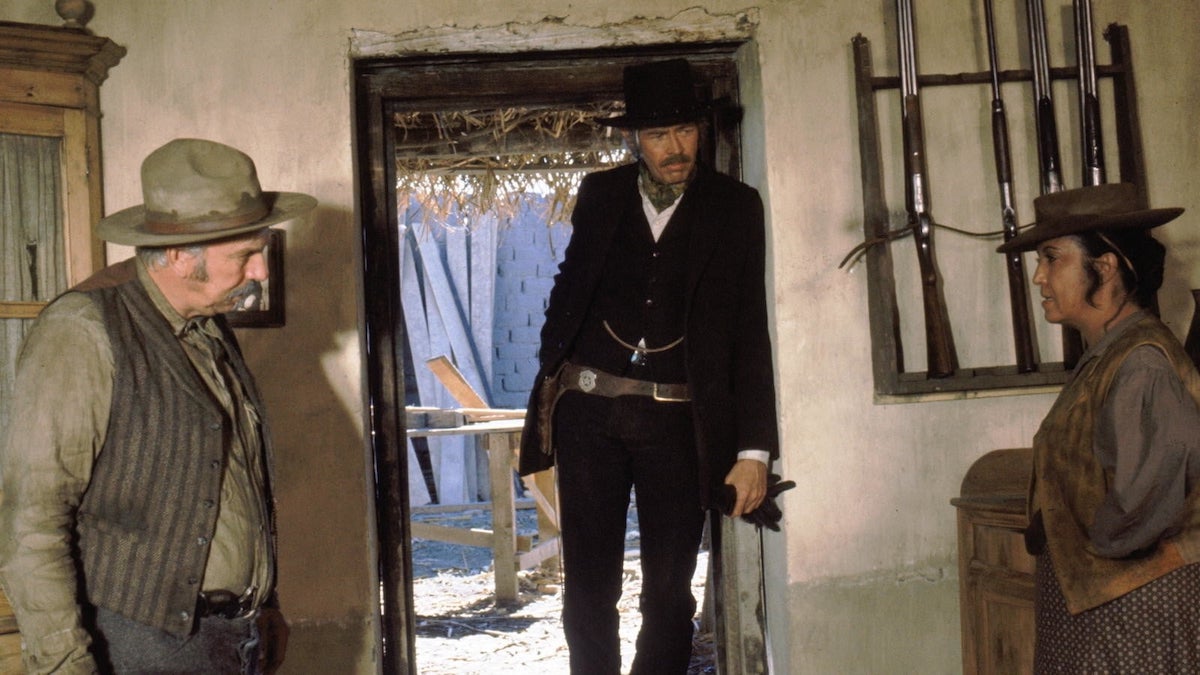
Six days later, Billy’s still hanging around the territory, stealing cattle. Garrett comes gunning for him. Garrett captures Billy, killing two of his friends. Billy escapes, killing two of Garrett’s deputies. From there, the chase is on as it circles down and back, leaving a string of corpses along the trail, to its forgone legendary conclusion, Garrett’s killing of the Kid in Fort Sumter, a few long months later (which here is portrayed with decent historical fidelity). There’s not much more to the story than that.
By the late-1970s I was living in Minneapolis, Minnesota, a time when repertory houses flowered everywhere. (Oh, you young ‘uns don’t know what you missed! Those really were the good old days for movie buffs!) I watched Pat Garrett and Billy the Kid whenever it rode into town, expecting it to find its place in my heart somehow. I even suffered through a network TV broadcast version where all the violence was cut and a missing additional scene of a quarrel between Garrett and his wife, Ida (Aurora Clavel), was inserted to make up for the lost time, but which only added to this version’s incoherence.
As I remained bored, I grew more annoyed, especially in the face of the growing praise the film received from many respected critics and scholars: they loved this film, even as they elliptically admitted to some flaws. By now, I’d heard the stories of the film’s production, which was chaotic even by Peckinpah’s notorious standards—all-night drinking parties, brawls, and a case of flu that laid the director low and even killed a crew member.
Along with all that came the abrupt cutting of both shooting and post-production schedules at the order of MGM studio head James Aubrey, a famously despised executive hired to take the studio out of the film business into hotels. Then followed the brutal ripping away of the film from Peckinpah’s innocent hands and hasty whittling down—by a total of six editors—to a dull parade of shootouts, stripping away the drama, ideas and their context.
Along with these stories came rumours of another version: Peckinpah’s version—a “preview” cut he and his superb editing team prepared for executives and preview audiences, not the final cut. There was only one screening of it before Aubrey and MGM reached for their axe. Drawn from Peckinpah’s private collection, it promised to fill the emptiness I’d experienced with each viewing. With Aubrey long gone and the MGM library sold to the Turner Company, there was hope that this new version, embodying Sam Peckinpah’s vision, would see the light of a theatre.
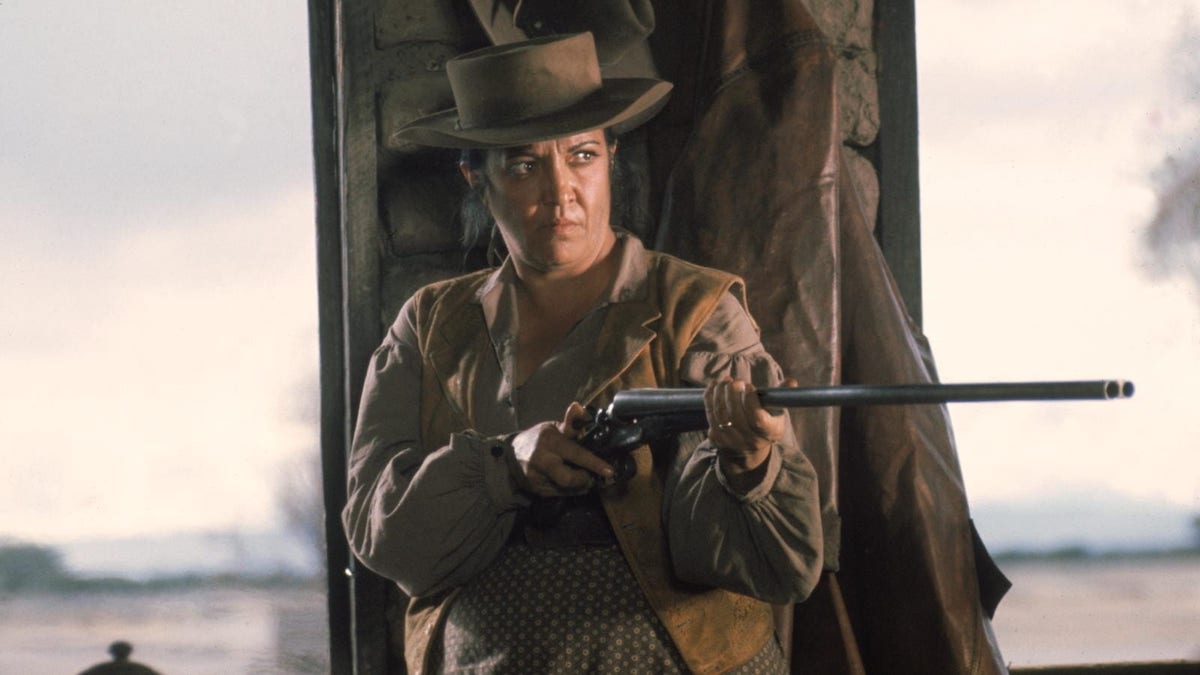
In 1988, the “Preview” version of Pat Garrett and Billy the Kid showed up at The Strand, a fondly remembered repertory/grindhouse theatre on San Francisco’s Market Street.
This version was different in a few significant ways. For one, there was the reinsertion of a framing device that dramatizes Pat Garrett’s 1908 murder in a land dispute. Shot in washed-out black-and-white, it added a layer of ironic tragedy to his story that seemed to be missing from the theatrical version. In addition, the domestic scene between Garrett and his wife, Ida, now in its full context, clarified Garrett’s desperate ambivalence about the domestic world he’d entered and the wide-open spaces he’d left behind. This was further contrasted with a scene where Garrett visits a prostitute to get the goods on Billy’s whereabouts that then becomes a pathetic orgy with Garrett failing to find the youthful glow he’d once known.
This was all good for the deepening of Garrett’s character, but beyond that concern, there seemed little improvement. Peckinpah’s taste for ponderous dialogue and message-making was certainly in evidence. Pat Garrett and Billy the Kid limped along, drifting from bloody pillar to bloody post while my dissatisfaction deepened.
In 2005, came one more version. (Both that and the 1988 version are available in the Warner Bros. DVD set Sam Peckinpah’s Westerns Collection.) This latest one was supervised by Paul Seydor, a film scholar, film editor, and among the best Peckinpah experts. He and his team didn’t re-edit the film but rather fine-tuned it, combining the best elements of the 1973 release version with the 1988 release version while shaving off the excesses of the “Preview” version. Having watched it yet again for this article, I still think they were trying to make a silk purse out of a sow’s ear. No matter what you do, it remains the same film. You might have a better time listening to the commentary by Seydor and other Peckinpah associates from that time.
Pat Garrett and Billy the Kid does have some virtues, starting with James Coburn’s grave and committed performance. He plays Garrett as a man trying to go along to get along as old age and encroaching civilization narrow his world, a favourite theme of Peckinpah’s. He’s caught between loathing his task and feeling duty-bound to follow it through, sometimes sadistically, for reasons beyond his limited grasp. His torment turns him into a cheap drunken bully. He’s trapped in a slow-draining bathtub too deep and slippery to climb out of. By all rights, he should be a Hamlet-like figure, torn by ambivalence as he hunts down the Kid, a reflection of his younger free-spirited self.
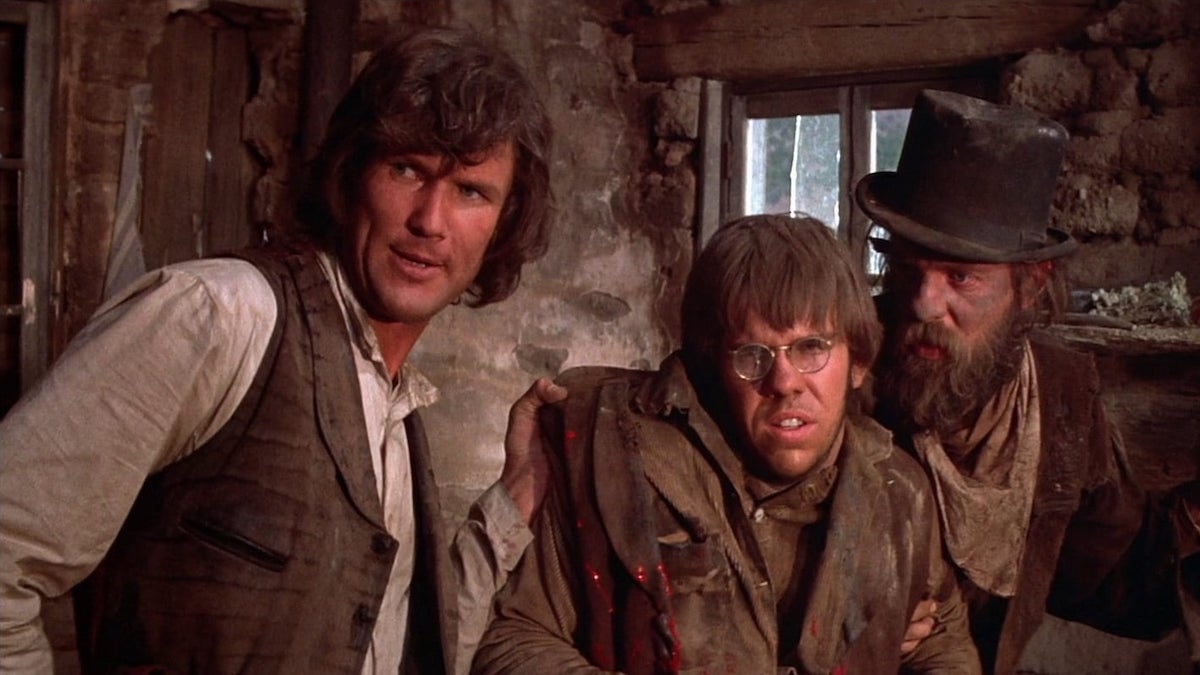
John Coquillon’s cinematography is also superb. Coquillon shot Straw Dogs with Peckinpah and here, again, the colour images are razor sharp. The film disdains the sepia tones used to create that fake nostalgic glow common in modern Westerns. Coquillon and Peckinpah portray the West as beautiful but a hard place to live in. You could slice your hand open just by leaning on a rock. Meanwhile, the sets and costumes are as gritty, grimy, and realistic as in any Western up to that time. The Old West was not much fun; a man might become an outlaw just to relieve the tedium or sink into bleary alcoholism. Or both.
Even with all the cutting and recutting, Pat Garrett also provides glimpses of Peckinpah’s genius in the editing room. At its best, the images are joined together with perfect timing and incredible grace, image matched with an image to create a marvellous, if grim, lyricism.
Pat Garrett also features a wonderful parade of “those guys,” the great Western character actors of the 1950s and 1960s, a rogue’s gallery that includes Harry Dean Stanton, L.Q Jones, R.G Armstrong, Jack Elam, Slim Pickens, Katy Jurado, and many others, all giving the film the feel of a picnic with old friends and family. One job of the character actor is to save bad movies, and those guys help lift this one. Their presence gives the film a sense of farewell to the genre.
Without them, the film might well be unwatchable because Pat Garrett and Billy the Kid in all four versions remains an entropic cat-and-mouse story where the cat doesn’t really want to catch the mouse while the mouse has neither the sense to run nor the grit and wit to stand his ground and fight.
In his great films, Peckinpah attacked the theme of male violence with disturbing poetry by shooting the action from multiple camera angles and a variety of camera speeds. When edited together, these scenes switch from slow motion to normal camera speed and back again, creating a queasy hypnotic effect that both attracts and repels. Try to look away, but you can’t.
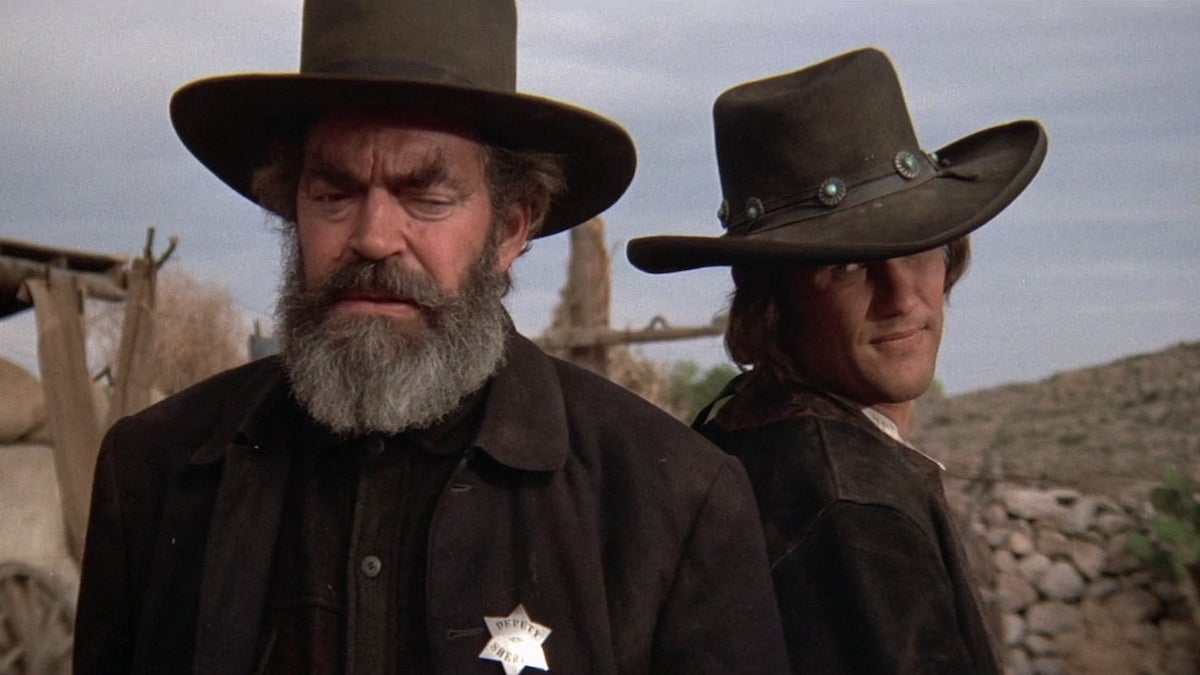
This technique, Peckinpah vainly hoped, would help purge us of our inner violent impulses while simultaneously provoking debates about violence itself, including the question of why we enjoy watching it onscreen at all. “You watch people getting killed for fun,” he seems to be saying. “What’s up with that? Are you as peace-loving as you all think you are?” It was certainly a good time to ask that question as the Vietnam War raged and riots blazed across America. Fifty years later, it’s still not an idle question.
But by 1973, thanks to Peckinpah’s example, so many films were using slo-mo violence—minus his mastery—it had become a cliché served up for sadists. Pat Garrett’s failure may be due to Aubrey’s demand for cheap and fast, which forbade Peckinpah from employing enough cameras (and camera operators) for coverage. Whatever the cause, the numerous gunfights play perfunctorily, lacking in that rising tension and burgeoning horror that made The Wild Bunch and Straw Dogs so memorably horrific and controversial.
Bob Dylan’s score is another problem. Jerry Fielding, a brilliant film composer and one of Peckinpah’s best collaborators, was set to score the film until in walked the force of nature that was Dylan. Understandably insulted, Fielding walked away. Sure, Dylan’s a genius but not when it comes to film scoring. He seems to have been trying to add an American folk roots patina to the film—a great idea—but his original instrumentations drizzle tonelessly over every scene. Like his performance as Billy’s friend “Alias,” he also seems at a loss as a film composer. The music fails to stir much emotion, except for, of course, “Knockin’ On Heaven’s Door,” which nicely flows under Slim Pickens’ death scene, the only truly feeling moment in the entire drama.
Pat Garrett is a lethargic, unfocused film. Moments pass with the actors staring into empty space as though waiting for direction. It plays slack, underwritten, underplayed, without Peckinpah’s raw urgency. Even his genius at portraying the boisterous camaraderie among men, captured so perfectly in Ride the High Country and The Wild Bunch, is absent. It’s nihilistic in the sense that no one wants anything, except to get drunk and get laid. Many people live their lives that way, but it seldom makes for good drama.
Excellent as James Coburn is, he’s trapped playing a man whose mournful rage lacks direction, an unsettling problem considering that he’s chasing one of the most notorious shootists of the Old West. He’s meant to be a man hunting his hidden self, but who that self is eludes the viewer.
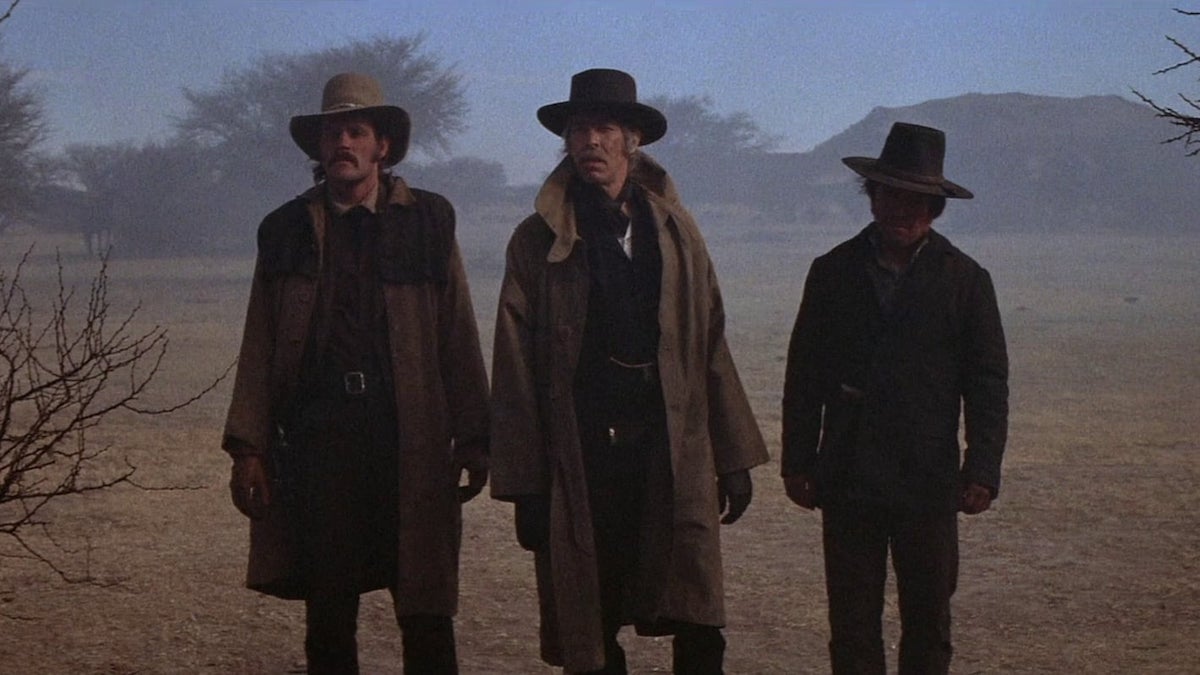
What’s wrong with this film—and how it went wrong—could fill a book. In fact, Paul Seydor has done just that with The Authentic Death & Contentious Afterlife of Pat Garrett and Billy the Kid: The Untold Story of Sam Peckinpah’s Last Western Film (Northwestern University 2015). Seydor sets out to tell the history of the film and rescue its reputation, which, save for its small group of passionate advocates, has never escaped the shadow of failure.
With so many versions, Pat Garrett remains a picture especially impossible to understand. Yet, Seydor gives it a good go, resulting in an absorbing, richly detailed account. It’s especially worthwhile for serious filmgoers with its keen insights into the complex and collaborative process behind film editing. Unfortunately, in my eyes, he winds up undercutting his own case for the film, even revealing a crucial flaw that had escaped me until then.
Seydor tells the story of Pat Garrett first via factual history and then, later, as myth and legend. Peckinpah enters the story via a 1956 novel by Charles Neider called The Authentic Death of Hendry Jones. Neider’s novel took an oblique, revisionist, anti-romantic approach to the myth of the outlaw, subverting their image as romantic tragic heroes, a popular attitude seen in movies like The Left-Handed Gun (1959). In his book, Billy is a short-sighted, short-tempered screw-up who leaves tragedy in his wake.
Peckinpah, then a young screenwriter committed to accurately portraying life and death in the Old West, fell in love with the novel and turned it into a script (a copy of which sits in my files). That script wound up in the hands of Marlon Brando who then turned to another auteur at the dawn of a great career, Stanley Kubrick. Kubrick, however, disliked the script and ordered Peckinpah fired, along with a page-one rewrite. (If only it were otherwise thus!) Eventually, Brando and Kubrick fell out leaving Brando to direct what became One-Eyed Jacks, an impressive, entertaining reversion to romantic cliché that Peckinpah called “a piece of shit.”
About 12 years later, a screenwriter named Rudy Wurlitzer tackled the Billy the Kid story directly. Wurlitzer’s original script focused on Billy while Pat Garrett rode the edges as a supporting character. Peckinpah came on bringing forth ideas from his original attempt years before. Strangely, through twenty-six drafts, the closer they drew to Garrett, the more Billy was moved to the margins where he became rather undefined.
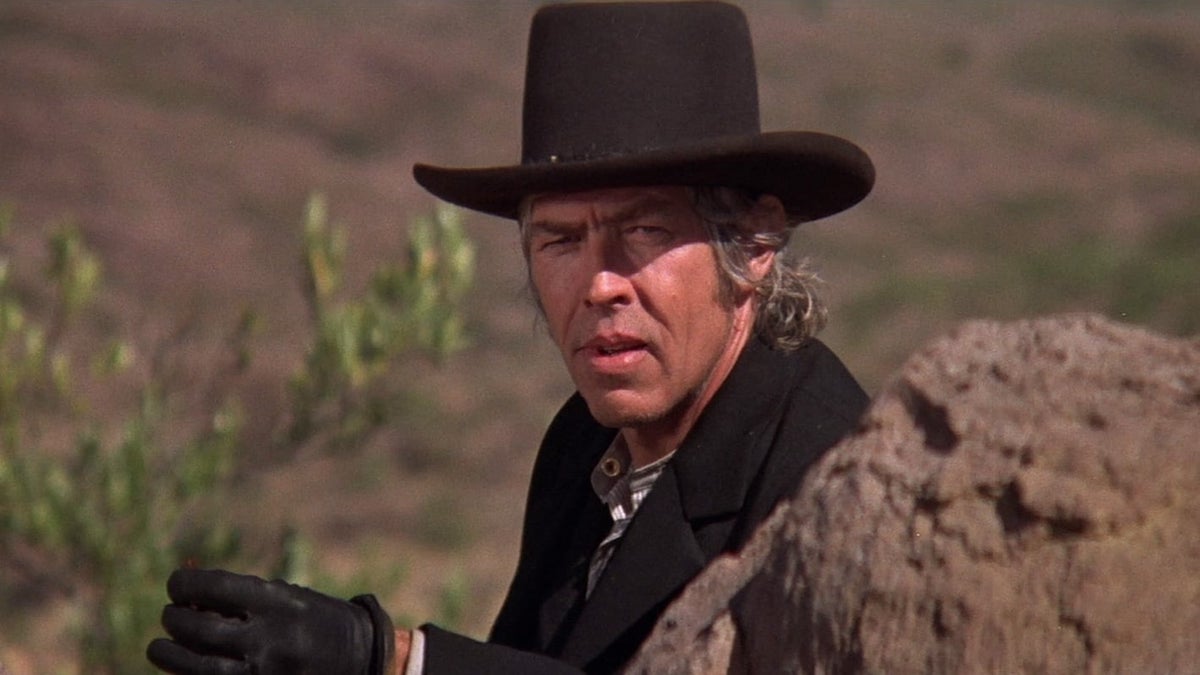
That was the flaw I’d missed through all my previous viewings of the film. Billy’s character, as written, remained undeveloped, unmotivated and stayed that way all through the chaos that followed as Sam Peckinpah, once a master of self-discipline, lost his grip over the picture and, tragically, over his roaring demons. He turned his focus from making what could have been among the defining films of his career to fighting a series of petty, personal battles not only with Aubrey but with his allies.
But even under a happier scenario, the central failure of Pat Garrett and Billy the Kid still lies with Billy. Not only in the script’s amorphous portrait of the Kid but also in the casting and performance of Kris Kristofferson, a mistake Peckinpah made all by himself.
No Billy the Kid movie has ever been true to history (nor ever will) but most of them agree on one thing: the real Billy the Kid was a firecracker; a charming, compelling young man. Like many young criminals who lack impulse control, he could also be fun company, even as many rightly feared and loathed him. He could sing. He could dance. He could charm all the girls. The Hispanic people in the territory were also fond of him as a gringo who didn’t treat them like dirt. In his narrow world, he was a star. Such a character can inspire a fierce drama about the ambiguities of heroism and the mystery of why we like whom we like, even if it endangers our moral sense, an important theme in much of Peckinpah’s work.
Billy the Kid is both the antagonist and a pivotal character. But in the writing, the casting and the acting, there is barely a pivot to circle. Peckinpah cast Kristofferson hoping that whatever problems the script had would be worked out as shooting progressed. But, drunk half the time, sick the rest, and consumed by his petty battles with Aubrey and others, that hole remained.
Meanwhile, he was stuck with a performer who lacked both a movie star’s charisma and an actor’s skills. Among those said to be considered for Billy, Jon Voight or Bo Hopkins (Crazy Lee in The Wild Bunch) might have given enough spark to cover the holes, giving the character and the film some desperately needed energy.
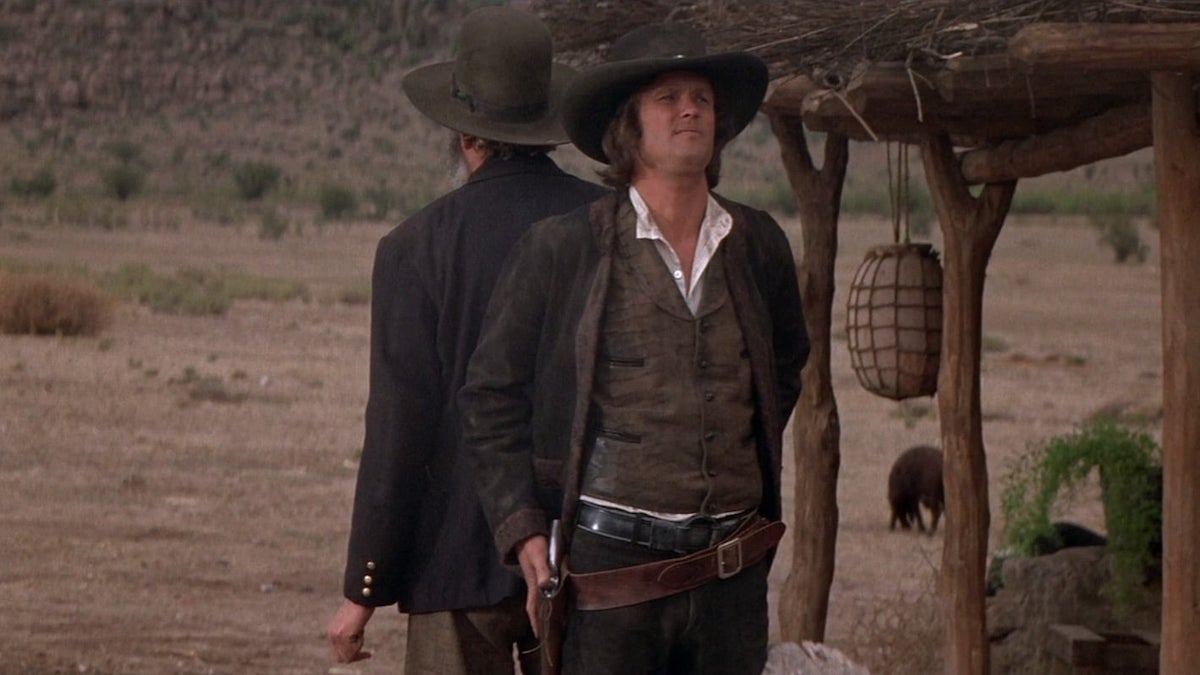
Kristofferson, sadly, is as dull as a damp coal fire. I find him reminiscent of a beer-soaked stoner hippie, one of those guys I’d party hard with on a Saturday night and then watch football with on Sunday afternoon as the hangover faded. He may be amiable company, but no one who’d inspire me to ride into danger.
What Billy’s gang, or Garrett, see in this guy, why they follow him, is unfathomable. A symbol of Pat Garrett’s lost youth, he sure is an empty vessel. It’s a shame that for all his efforts, Coburn has so little to work against. Garrett’s mournful reluctance is baffling because there’s no one in the mirror worth mourning. No matter how you cut this film, there’s no fixing that.
One sequence where this is painfully glaring is Billy’s half-hearted escape to Mexico, one of the worst scenes ever in a Peckinpah movie. He comes across a gang of cattle baron John Chisum’s cowboys who are murdering his friend, Paco (Emilio Fernandez), and raping his wife and daughter. Billy kills Chisum’s men and, after Paco dies at the end of a dreadful deathbed speech, he mumbles lethargically about “going back,” and, then gallops away back to Fort Sumter, leaving Paco’s family all alone to bury their patriarch!
At this point, the film should catch fire as The Wild Bunch does once Pike Bishop (William Holden) makes his decision to turn and fight. Instead, Billy and his gang mumble something about revenge against Chisum before going off to get drunk and laid while Garrett gloomily marches in to put Billy down like a tired dog.
In the end, Pat Garrett and Billy the Kid’s failure rests on Peckinpah more than anyone else, even James Aubrey. He’d wasted so much time and effort on fighting Aubrey over any lame excuse he could find, he’d neglected his true purpose—to make a movie to match his great talent. He ended this ignoble episode by walking away, not even showing up for the final screening of his (unfinished) preview version. A year later, Daniel Melnick, a producer, and another of Sam’s best collaborators, offered him a chance to return and finish up the film the way he wanted it, carte blanche. But by then Peckinpah had drifted away, never to return.
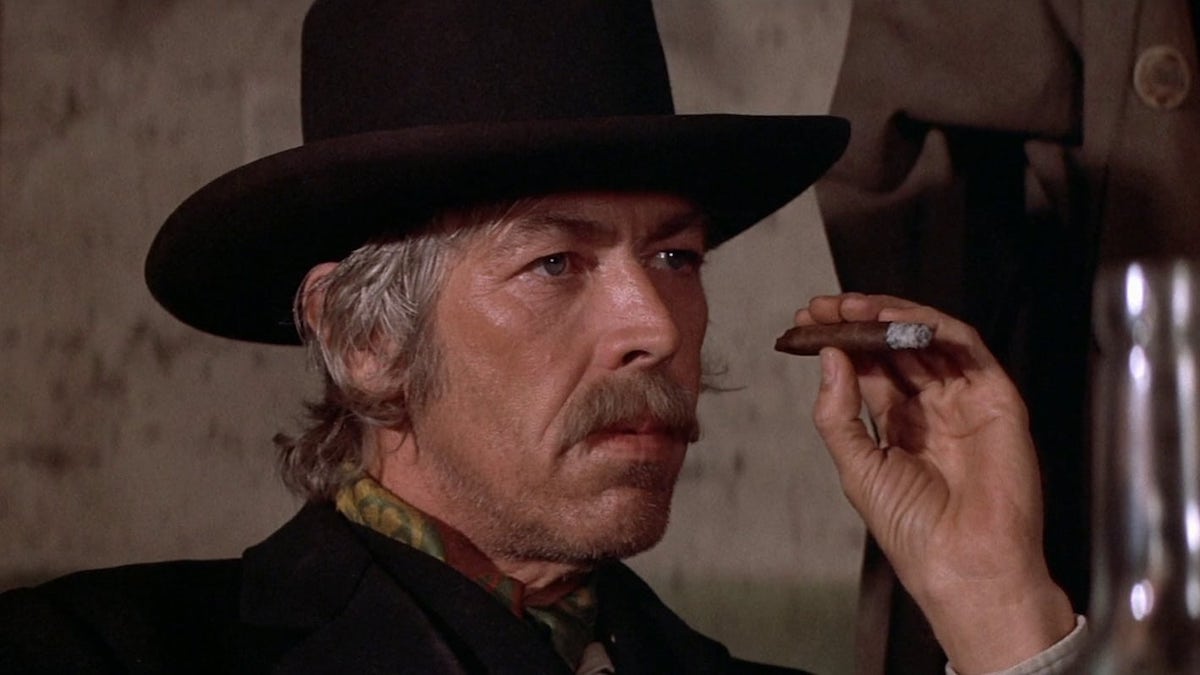
‘Why’ isn’t clear. Despite their giant egos, true artists can be as aware of the shortcomings of their work as any critic and Peckinpah was perceptive to the flaws in his work. It’s presumptuous on my part to guess, but he may well have seen Pat Garrett’s problems and understood there was no fixing them. It was a painful mistake not worth revisiting.
It shouldn’t have mattered in the long run. All prolific artists go through dead periods where their work falls short, sometimes spectacularly. Some, like Hitchcock, Huston, Ford and others, find the spark again and return to making the films they know they can make.
But Sam Peckinpah, who blurred the border between genius and madness like no other, never hit his stride again. As he stumbled from project to project, the nihilism that had been haunting the edges of his work boxed him into a corner. Only his war film, Cross of Iron (1977), showed glimmers of his original genius while Convoy (1976), in my blunt estimation, is one of the worst films ever made by a major auteur.
His health ruined by addiction and a riotous lifestyle, Sam Peckinpah died in 1984 at the age of 59, his artistry unfulfilled. He had talent enough to make 40 movies, as one collaborator put it, but he only made 14. Director Paul Schrader, a passionate Peckinpah admirer, once described him as akin to a brawler who always got up from the barroom floor to fight again. He saw filmmaking almost solely in terms of combat and as a kind of mythmaking. In the end, though, myth gives way to bumpy reality and to compromise. In Peckinpah’s case that reality, that ability to work with the world as it is to make the films he wanted, eluded him, to everyone’s loss.
USA MEXICO | 1973 | 106 MINUTES (THEATRICAL) • 115 MINUTES (2005 DVD) • 122 MINUTES (1988 RESTORATION) | 2.35:1 | COLOUR | ENGLISH

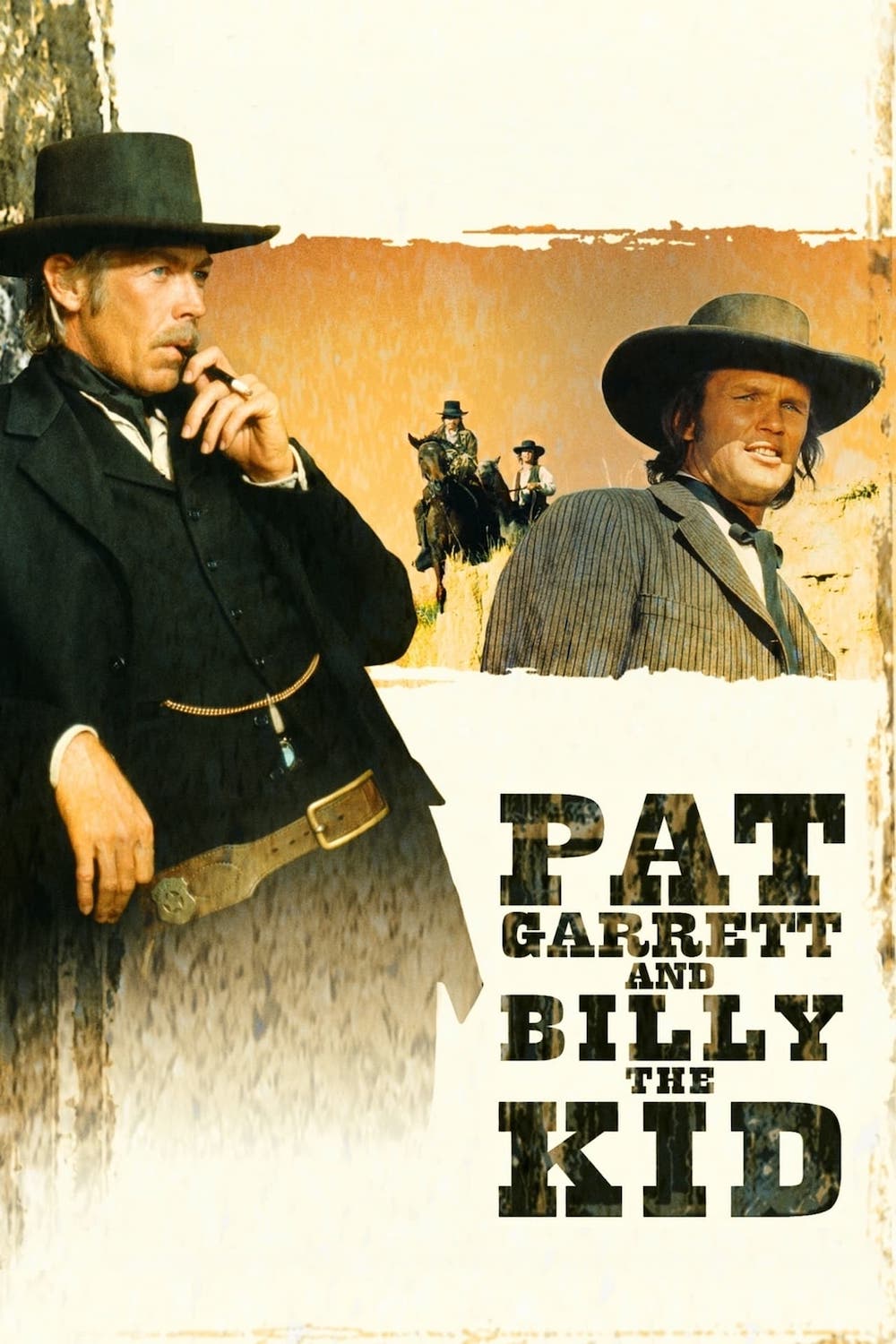
director: Sam Penkinpah.
writer: Rudy Wurlitzer.
starring: James Coburn, Kris Kristofferson, Bob Dylan, Jason Robards, Rita Coolidge, Chill Wills, Barry Sullivan, R.G Armstrong, Luke Askew, John Beck, Richard Bright & Matt Clark.
